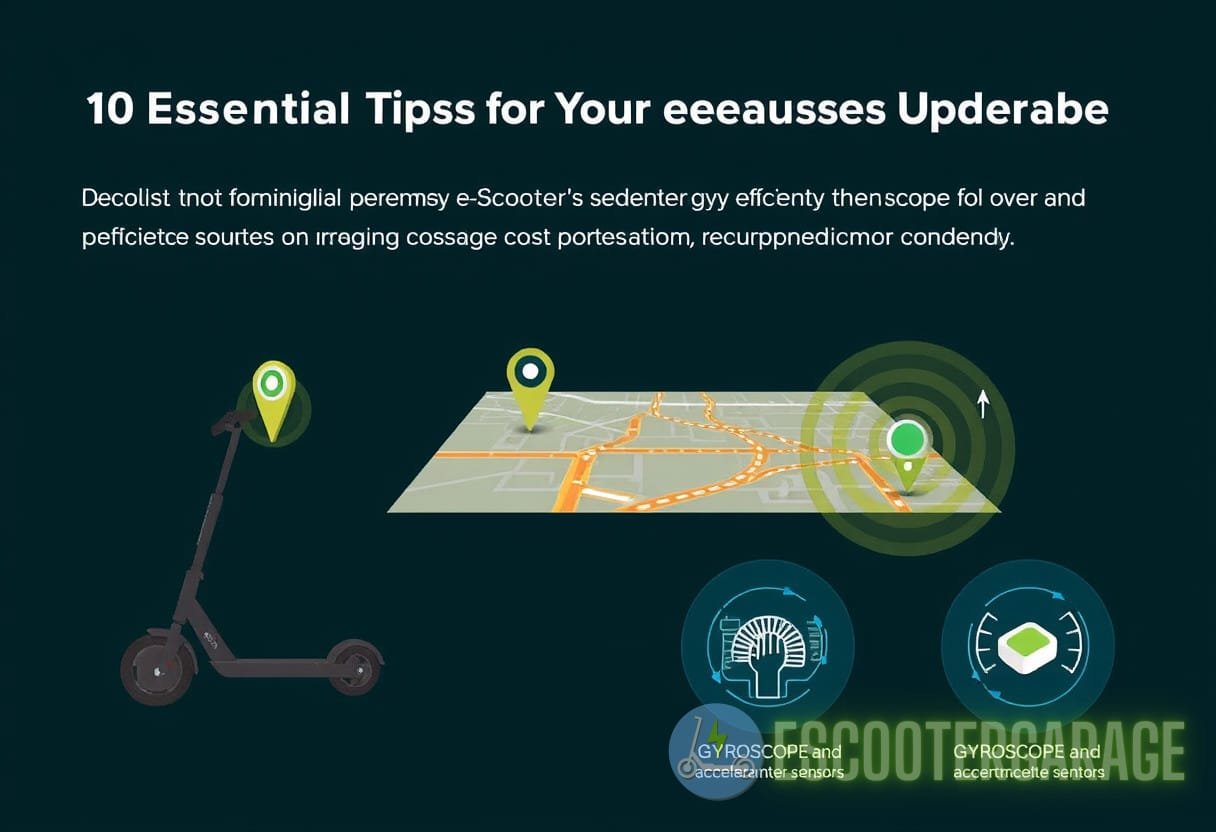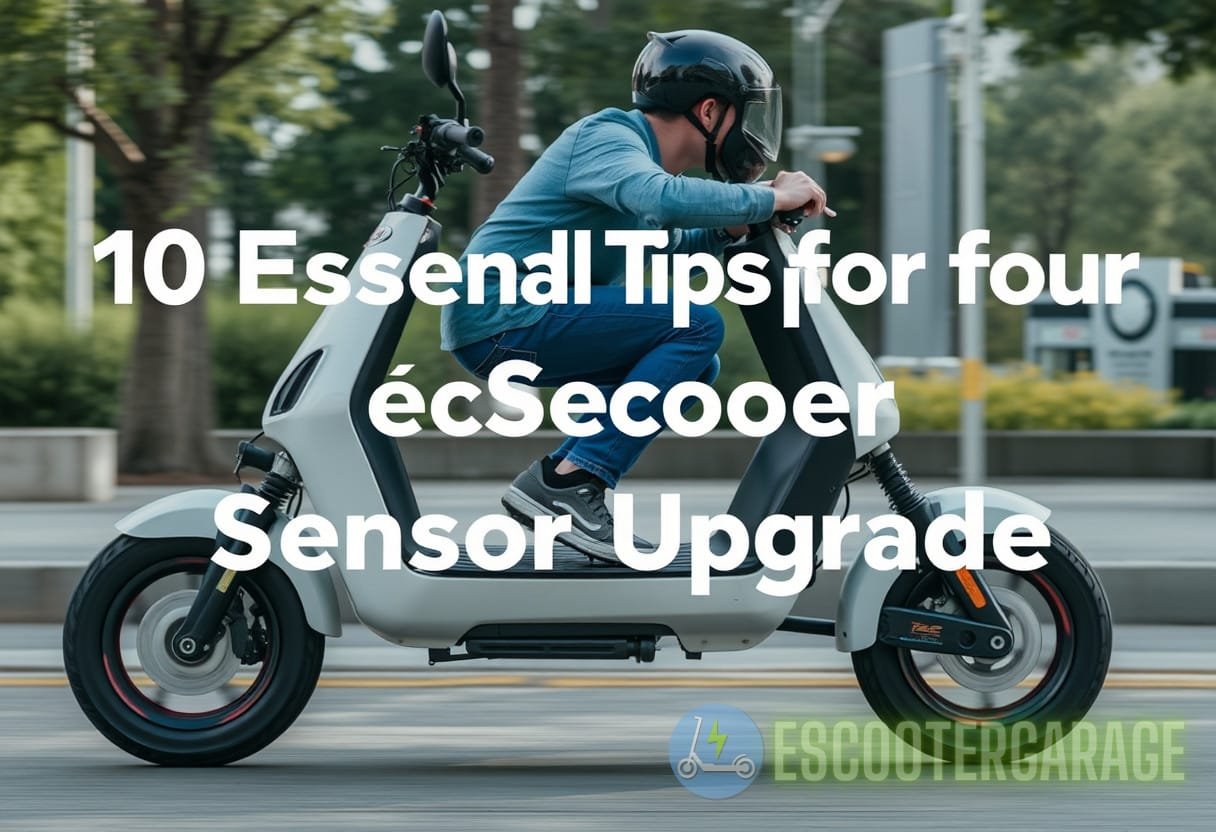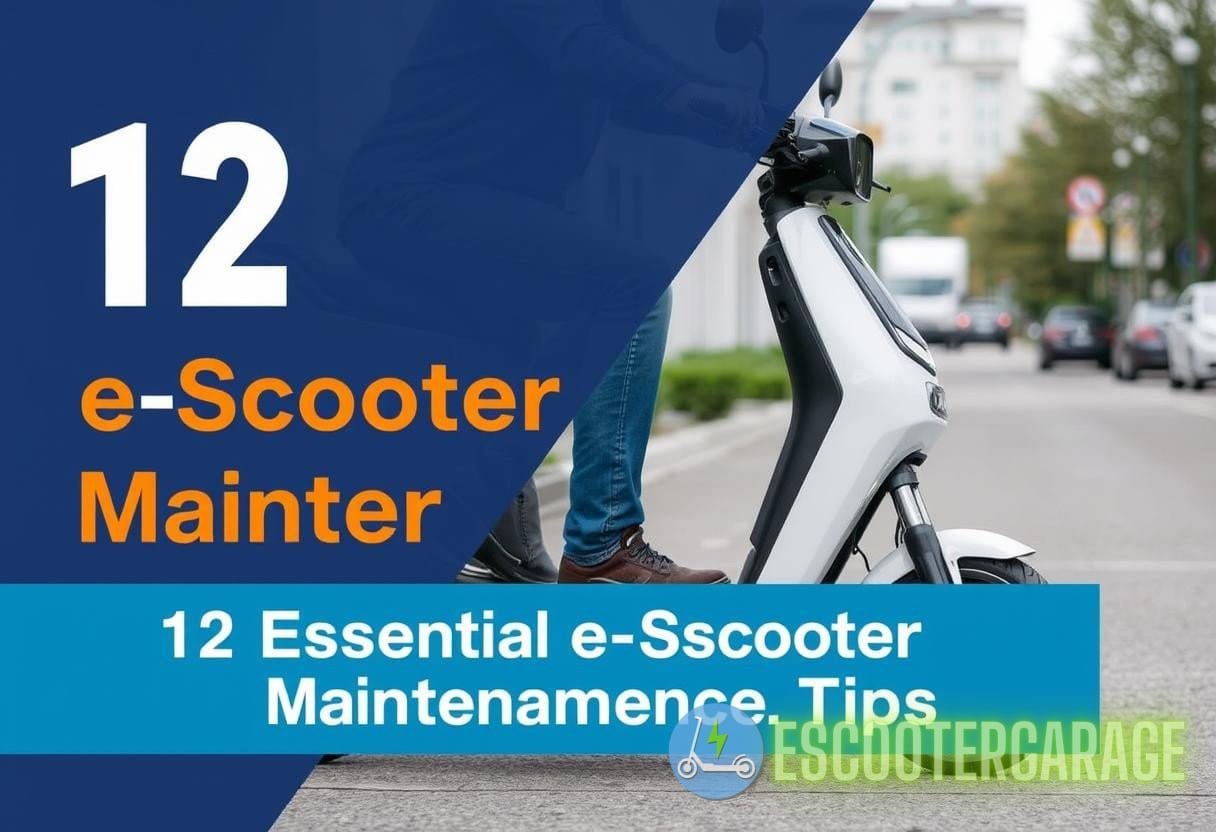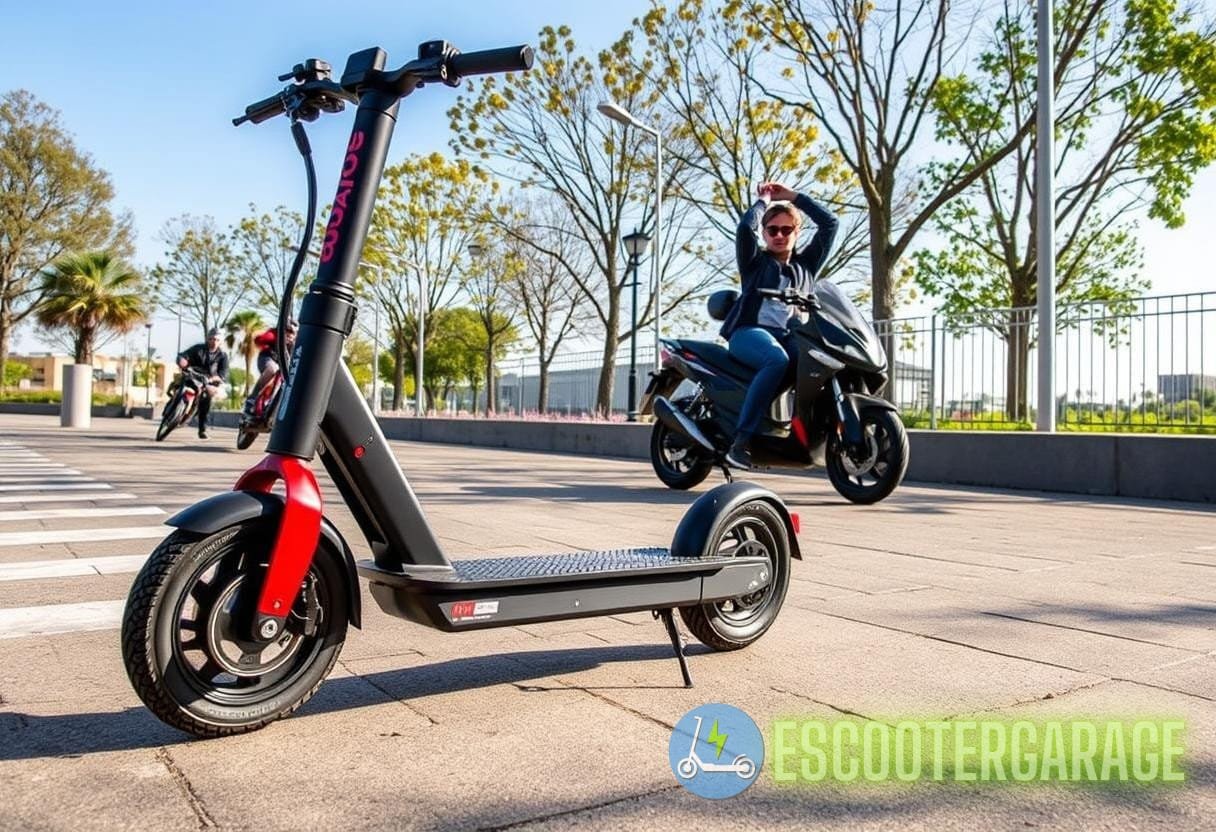Enhancing eScooter Efficiency: Integrating Advanced Sensor Technologies for Real-Time Performance Monitoring and Optimization
The eScooter revolution has transformed urban transportation, making commuting more efficient and environmentally friendly. However, the efficiency of eScooters can vary significantly based on multiple factors, including the quality of the components used. One of the key advancements in this domain is the integration of sensor technologies to allow for real-time performance monitoring and optimization. In this guide, we will explore how you can enhance eScooter efficiency with an escooter sensor upgrade, focusing on the different types of sensors available, their applications, and how they can improve overall performance.
Understanding the Role of Sensors in eScooter Performance
Sensors are devices that detect changes in the environment and convert that information into signals that can be measured and analyzed. In eScooters, sensors play an essential role in gathering data about various parameters that affect performance. Some of the critical areas where sensors are vital include:
- Speed Monitoring: Utilizing speed sensors can help maintain optimal operation speeds and improve battery efficiency.
- Battery Management: Battery sensors provide real-time data on charge levels and health conditions.
- Location Tracking: GPS sensors enable better routing, facilitating the identification of optimal paths.
- Braking Systems: Sensors in braking systems can help avoid skidding and improve safety.
By enhancing these capabilities through an escooter sensor upgrade, you can significantly optimize your eScooter’s efficiency.
Types of Sensors and Their Functions
In the context of eScooters, specific sensors are integral for enhancing efficiency. Several types of sensors that can be integrated include:
1. Speed Sensors
Speed sensors measure the velocity of the eScooter. By maintaining optimal speed, they can help improve battery runtime. Many modern eScooters come with electronic speedometers; however, upgrades can lead to more precise measurements and efficiency.
2. Battery Management Sensors
Battery sensors monitor the charge level and can predict battery lifespan. They can provide real-time feedback on usage patterns, helping to avoid deep discharges that can damage battery cells. This is an essential aspect of any escooter sensor upgrade.
3. GPS and Location Sensors

GPS technology allows for real-time tracking of the eScooter’s location and can help route users through paths that save energy. This technology enhances not only efficiency but also user safety through geo-fencing capabilities.
4. Gyroscope and Accelerometer Sensors
These sensors help detect motion and orientation, allowing for advanced control over stability and braking. Gyroscopes can help maintain the eScooter’s balance, while accelerometers can adjust speeds for a smoother ride.
5. Temperature Sensors
Temperature sensors monitor the heat generated by the motors and batteries. Keeping these components within their safe operational temperatures ensures optimized performance and longevity.
Integrating Sensor Technologies: Challenges and Considerations
While integrating advanced sensors can vastly improve eScooter performance, it is essential to consider certain challenges:
- Compatibility: Ensure that the new sensors are compatible with your existing eScooter systems.
- Installation Complexity: Some sensor installations may require advanced technical skills or professional help.
- Cost: Budget for both the necessary sensors and any potential installation fees.
- Data Management: Implementing a system to analyze the data collected by the sensors is essential for maximizing benefits.
Real-World Examples of eScooter Sensor Integration
Numerous manufacturers are beginning to embrace advanced sensor technologies in their eScooter designs. For instance, the Xiaomi Mi Electric Scooter utilizes multiple sensors to gather data on battery health, speed, and more, allowing for smart control of the vehicle.
Another notable example is the Bird scooters, which feature extensive GPS tracking capabilities. This technology helps users locate the closest scooters and ensures they are maintained through regular telemetry data.
These practical integrations underline the importance of sensor technology and serve as a model for future advancements.
Enhancing User Experience through Data Analysis
Data collected from sensors does not just enhance the eScooter’s functionality; it can also improve user experience significantly. Here are some ways that data analysis can facilitate better user engagement:

- Personalized Feedback: By interpreting sensor data, users can receive tailored advice on their driving habits, potentially increasing battery lifespan and efficiency.
- Route Optimization: Analyzing location data allows for creating optimal routes that conserve battery power.
- Maintenance Alerts: Sensors can trigger alerts for required maintenance before issues arise, preventing costly repairs.
Implementation Steps for eScooter Sensor Upgrade
Here’s a comprehensive step-by-step approach to successfully integrating sensors into your eScooter:
- Assessment: Identify the current limitations of your eScooter and determine which sensors will address these issues.
- Research: Investigate different sensor options available in the market that are suitable for your model.
- Purchase: Buy quality sensors from reputable brands, ensuring they are designed for easy compatibility.
- Documentation: Gather installation manuals and additional resources, which might include links to instructional videos.
- Professional Installation (If Necessary): Consider hiring a technician if the installation seems complex.
- Testing: After installation, conduct thorough testing to ensure that all new sensors function correctly.
- Regular Updates: Keep your software updated to benefit from new features and fixes.
Monitoring Performance After Upgrades
Once you’ve completed your escooter sensor upgrade, it’s crucial to monitor the performance of your eScooter continuously. Many modern sensors can integrate with mobile apps, allowing for real-time monitoring of performance metrics. Key metrics you should monitor include:
- Battery Health: Keep track of battery cycles and health reports.
- Speed and Acceleration: Monitor variations that may indicate potential problems or inefficiencies.
- Distance Traveled: Analyze data to optimize ride habits over time.
Regular monitoring ensures that you can make informed adjustments or repairs to enhance efficiency continually.
Conclusion: The Future of eScooter Technologies
As technology continues to evolve, the potential for enhancing eScooter efficiency using advanced sensor technologies expands immensely. From speed and battery management to user experience through data analysis, each layer of enhancement contributes to a sustainable future for urban transportation. By committing to a strategic escooter sensor upgrade, users can enhance both the performance of their vehicles and their overall riding experience.
For further reading on how to enhance your eScooter, consider visiting our detailed installation guide and consult our resource on maintenance tips tailored for electric scooters.



